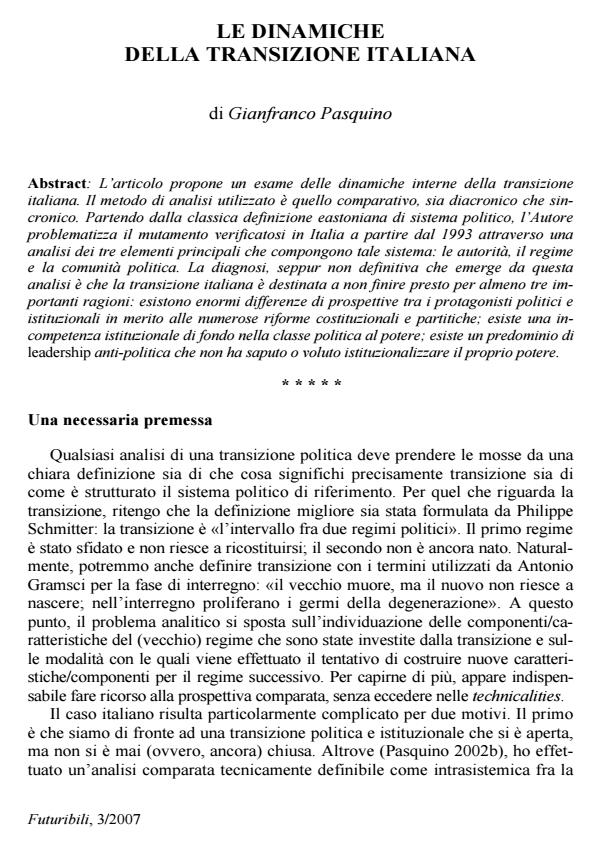Le dinamiche della transizione italiana
Journal title FUTURIBILI
Author/s Gianfranco Pasquino
Publishing Year 2008 Issue 2007/3
Language Italian Pages 16 P. 173-188 File size 177 KB
DOI
DOI is like a bar code for intellectual property: to have more infomation
click here
Below, you can see the article first page
If you want to buy this article in PDF format, you can do it, following the instructions to buy download credits

FrancoAngeli is member of Publishers International Linking Association, Inc (PILA), a not-for-profit association which run the CrossRef service enabling links to and from online scholarly content.
The dynamics of Italian transitionThe method used by the author to analyse the internal dynamics of the Italian transition is comparative, both diachronic and synchronic. Starting from the classical Eastonian definition of a political system, the author focuses on the changes that have occurred in Italy since 1993 with regard to the three main elements comprising that system: the authorities, the regime and the political community. The provisional diagnosis emerging from the analysis is that the Italian transformation is not likely to finish any time soon, for at least three reasons. First, there are huge differences of perspective among all political and institutional protagonist with regard to a wide range of possible constitutional and party reforms. Second, the politicians in power are characterised by basic institutional incompetence. Third, there is a predominant anti-political leadership which has been unable or unwilling to institutionalise its own power.
Gianfranco Pasquino, Le dinamiche della transizione italiana in "FUTURIBILI" 3/2007, pp 173-188, DOI: